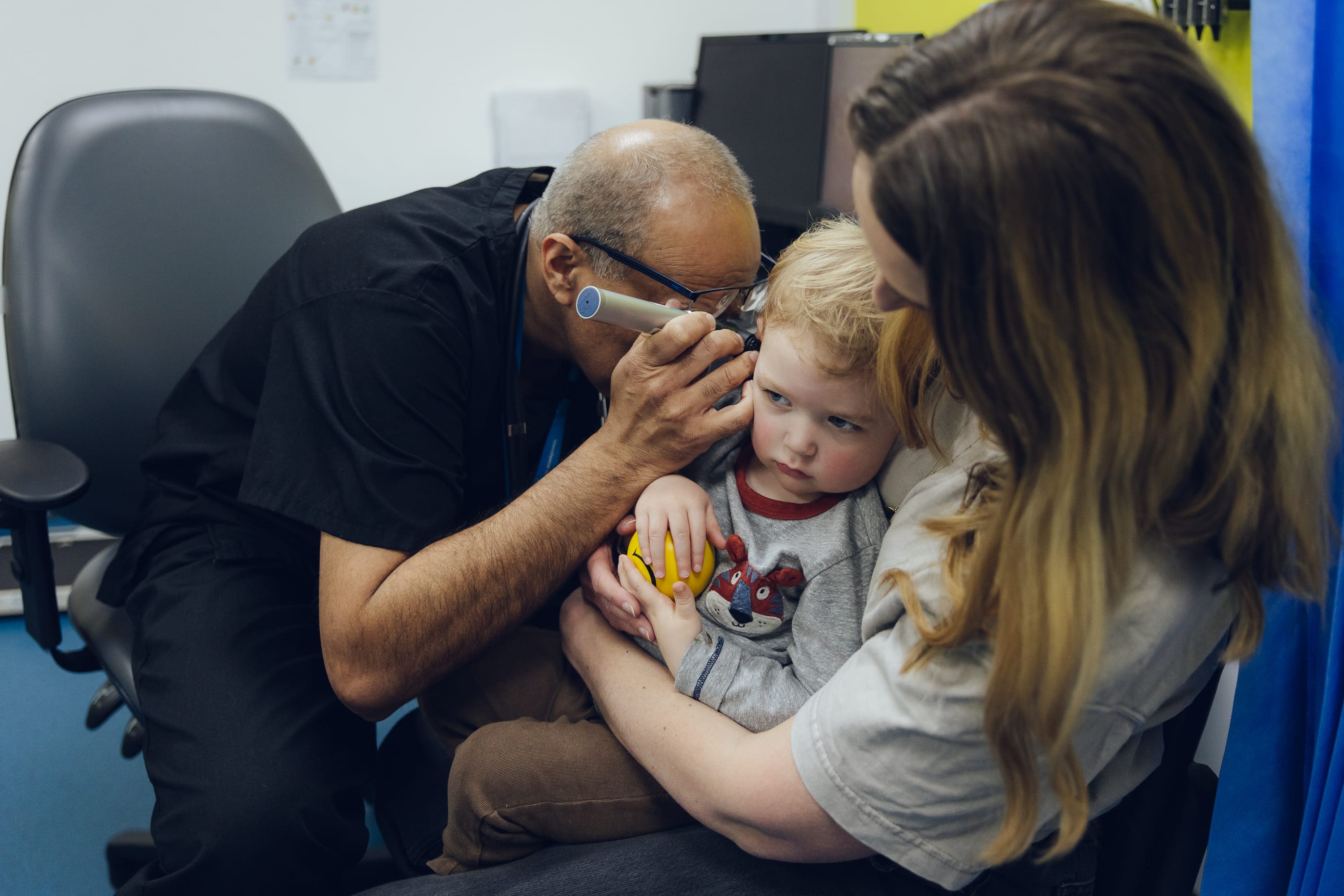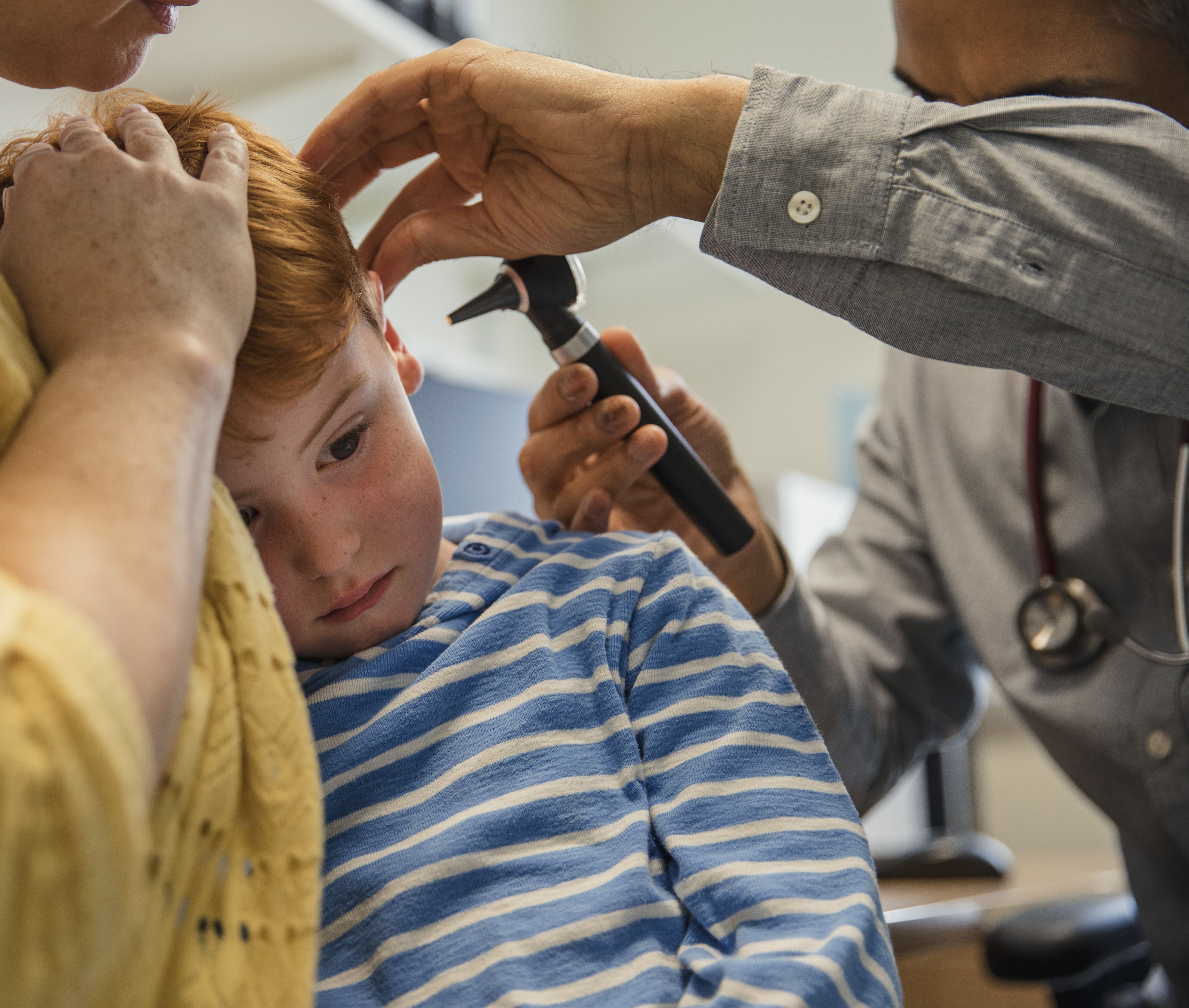Implementing an antimicrobial prescribing strategy for ear infection in children

North East and North Cumbria Integrated Care Board used behaviour change techniques to implement our antimicrobial prescribing guideline on acute otitis media. They were keen to ensure appropriate use of antibiotics when treating children with ear infections, reducing the risk of antimicrobial resistance. They sought to increase the use of eardrops containing an anaesthetic and an analgesic for pain relief, instead of antibiotics, where appropriate.
Dr Tessa Lewis, GP and chair of our managing common infections advisory committee
Dr Tessa Lewis, GP and chair of our managing common infections advisory committee
“When we as health professionals are discussing treatments for common infections with patients, it is important to talk about the benefits and harms of prescribing antibiotics. This includes the risks of antimicrobial resistance and the threat this poses to public health.”
The medicines optimisation team at North East and North Cumbria Integrated Care Board identified that prescribing of antibiotics in County Durham was higher than the national average. The data showed that prescribing in children, especially for self-limiting infections, was a key area of concern. User research suggested antibiotics were being prescribed in this sub-group because of:
- parental pressure
- concern about possible complications
- a feeling that the antibiotic was unlikely to do any harm.
Antibiotic prescribing in County Durham was higher than the national average
Antibiotic prescribing in County Durham was higher than the national average
A useful and useable guideline
In March 2022, NICE reviewed its antimicrobial prescribing guideline on acute otitis media. We added a new recommendation on eardrops containing an anaesthetic and an analgesic. This was because a licensed preparation (Otigo) had become available in the UK.
The guidance says that prescribers should offer an analgesic for pain and consider eardrops containing an anaesthetic and an analgesic if an immediate oral antibiotic prescription is not given, and there is no eardrum perforation or otorrhoea. This supports prescribers as they can offer a treatment option but without resorting to antibiotics.
North East and North Cumbria Integrated Care Board welcomed this guideline update and implemented it across their region.

Dr John Nicholls, GP at Annfield Plain Surgery in County Durham
Dr John Nicholls, GP at Annfield Plain Surgery in County Durham
“Local anaesthetic ear drops are a helpful option when children are struggling with ear pain. GPs have so much sympathy for both the child and parent, but we should not be using antimicrobials unnecessarily."
The COM-B model of behaviour change
The team used the COM-B model to help identify appropriate interventions that had the potential to effect behaviour change in prescribers, patients and carers. The COM-B model is a framework that suggests capability, opportunity and motivation are essential for any behaviour change. They:
- Created and distributed leaflets raising awareness among prescribers of the NICE guideline and the existence of eardrops containing an anaesthetic and an analgesic.
- Ran educational sessions with local prescribing groups and at local primary care pharmacy team meetings as part of World Antibiotic Awareness Week.
- Submitted an Otigo formulary application request to the local formulary committee for approval.
- Ensured Otigo was included on local clinical system formularies.
- Asked GP practices to review their decision support tools to highlight when eardrops containing an anaesthetic and an analgesic may be an option.
- Included a prescribing indicator target to reduce antibiotic prescribing as part of the local incentive scheme.
- Commissioned a bespoke practice-level report on antibiotic prescribing. This included an indicator to show the number and proportion of patients prescribed an antibiotic for an upper respiratory tract infection (including otitis media). It enables practices to compare their data with others in the region.
- Ran a public facing information campaign about appropriate antibiotic use that included a specific message about ear infections in children.
The medicines optimisation team shared campaign messages across the region
The medicines optimisation team shared campaign messages across the region
Results
Prescribing data to November 2023 showed that County Durham is now among the highest prescribers of Otigo in the country.
Comparing data from October 2022 and October 2023, there was an overall increase in the amount of antibiotics prescribed in Country Durham. However, this could have been because of an ongoing concern among prescribers and parents following increased incidence of invasive group A streptococcal infection the previous winter. National public health messaging at that time had recommended treating suspected scarlet fever cases promptly with antibiotics.
As prescribing data is not linked to clinical condition, it is not currently possible for the County Durham team to determine if prescribing rates of antibiotics for acute otitis media in children have reduced. To address this, the team is reviewing practice level audits from across the region to capture the data they need.
In addition, using resources from the Royal College of GPs TARGET antibiotics toolkit, they are:
- assessing the impact of their behaviour change work
- continuing to raise awareness among prescribers of appropriate use of antibiotics when treating children with ear infections
- identifying if further work is needed.

Pharmacy First service
NICE’s work in this area is continuing. To help a healthcare system under pressure, we’ve worked with NHS England to develop Pharmacy First. The service gives patients access to quicker and more convenient care while freeing up GP appointments. It empowers community pharmacists in England to diagnose and treat 7 common conditions, including ear infections. It aligns with our antimicrobial prescribing guidelines and eardrops containing an anaesthetic and an analgesic are included as a management option for acute otitis media where appropriate.
Pharmacy First enables pharmacists to provide treatment and some prescription medicines without seeing a GP
Pharmacy First enables pharmacists to provide treatment and some prescription medicines without seeing a GP
Find out more
Alongside our acute otitis media guideline, we’ve produced a 2-page visual summary of the recommendations. It includes an easy-to-follow flow chart and choice-of-treatment table to support prescribing decisions.
We’ve also published a short version of the guideline aimed at members of the public. We’ve designed it to help aid discussions between people with otitis media and their healthcare professional.
If you have any questions about this project and the work North East and North Cumbria Integrated Care Board carried out, you can email the team.




